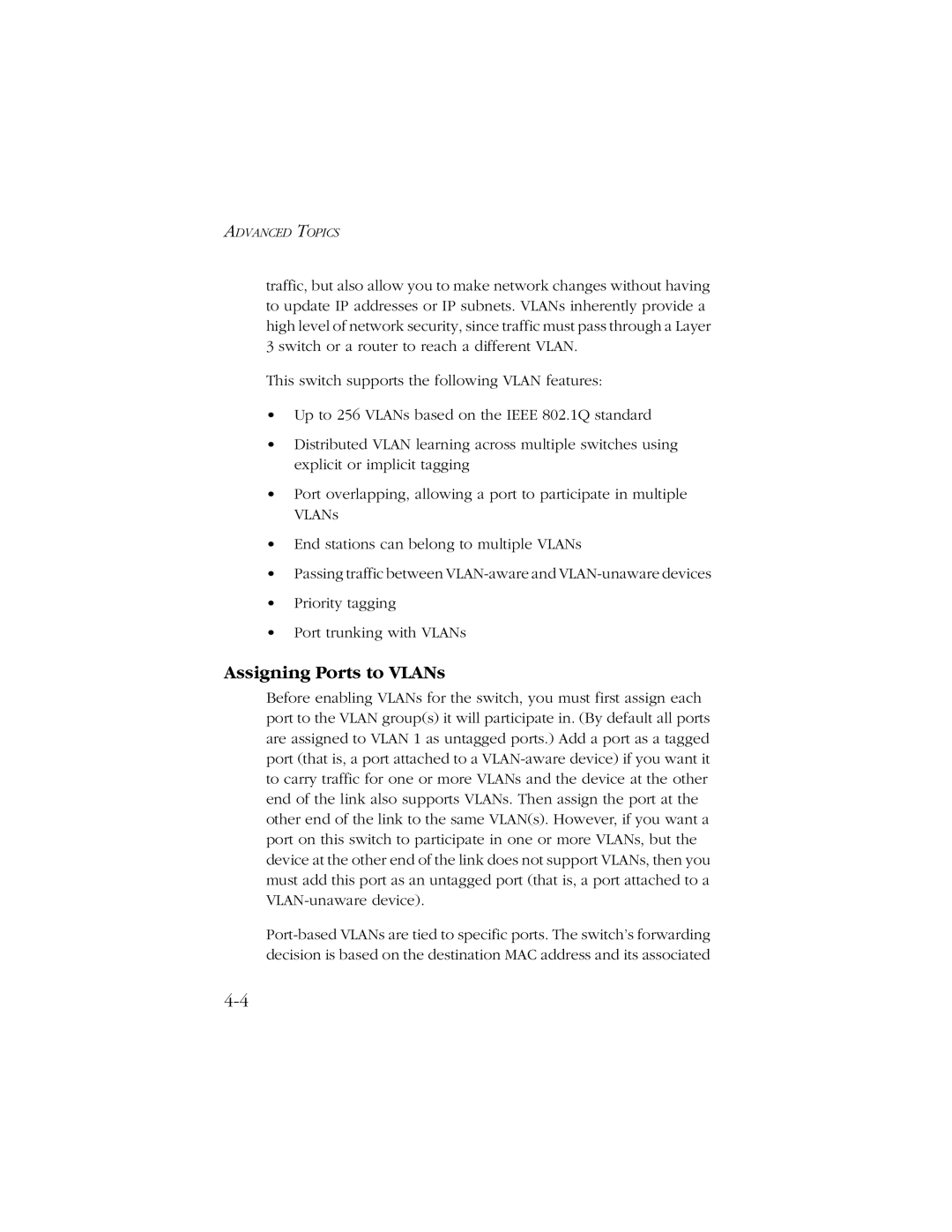ADVANCED TOPICS
traffic, but also allow you to make network changes without having to update IP addresses or IP subnets. VLANs inherently provide a high level of network security, since traffic must pass through a Layer 3 switch or a router to reach a different VLAN.
This switch supports the following VLAN features:
•Up to 256 VLANs based on the IEEE 802.1Q standard
•Distributed VLAN learning across multiple switches using explicit or implicit tagging
•Port overlapping, allowing a port to participate in multiple VLANs
•End stations can belong to multiple VLANs
•Passing traffic between
•Priority tagging
•Port trunking with VLANs
Assigning Ports to VLANs
Before enabling VLANs for the switch, you must first assign each port to the VLAN group(s) it will participate in. (By default all ports are assigned to VLAN 1 as untagged ports.) Add a port as a tagged port (that is, a port attached to a
